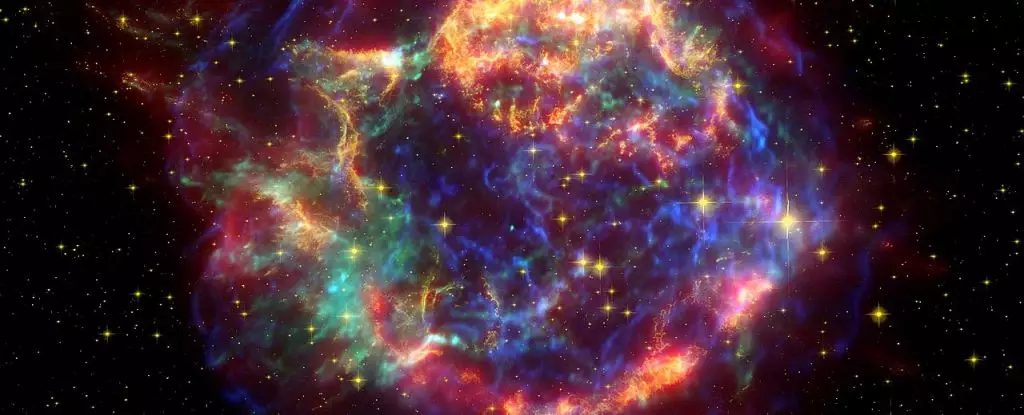Cosmic rays have fascinated scientists for over a century, but their origin remains a mystery. Recently, the CALorimetric Electron Telescope (CALET) aboard the International Space Station has detected the most energetic cosmic-ray electrons ever recorded. This breakthrough discovery provides valuable insights into the potential sources of these enigmatic particles.
Since 2015, CALET has collected data on more than 7 million particles, shedding light on the origins of cosmic-ray electrons. Astrophysicist Nicholas Cannady of the University of Maryland Baltimore County, a member of the CALET Collaboration, expresses his excitement about the findings. The dataset points to the existence of at least one nearby source of cosmic-ray electrons and potentially more. Cannady believes that the most remarkable aspect is the detection of particles at the highest energies, which could serve as a smoking gun for evidence of a nearby source.
Cosmic rays have eluded scientists’ understanding due to their tiny size and immense energy. These particles, including atomic nuclei, protons, and electrons, traverse the cosmos at nearly the speed of light, possessing an extraordinary amount of power. The favored hypothesis suggests that supernova remnants accelerate particles, propelling them through space. Nevertheless, alternative sources, such as the annihilation of dark matter, still remain under consideration. Given the challenge of detecting cosmic rays, scientists must rely on the observation of particle showers rather than directly capturing the cosmic rays themselves.
The Game-Changing CALET Experiment
The CALET experiment conducted in space revolutionizes the study of cosmic rays by allowing direct detection of high-energy particles. Previous research provided insights into cosmic rays up to 4.8 teraelectronvolts. However, CALET’s extensive dataset, coupled with new error-correction processes, enabled the team to identify electron cosmic rays up to 7.5 teraelectronvolts. This expanded range of recorded data significantly enhances our understanding of cosmic rays.
The Surprising Findings
One of the most intriguing discoveries is that the incidence of cosmic rays does not decrease at higher energies; if anything, it seems to increase. This finding challenges previous assumptions and suggests that these high-energy cosmic rays may originate relatively close to us. Supernova remnants near our location align with the detection of some of the highest-energy cosmic rays in the dataset. Continued observation and analysis aim to shed further light on the exact source of these energetic particles.
Potential Implications
The implications of the CALET observations are profound. Physicist T. Gregory Guzik of Louisiana State University, who leads the US branch of the CALET Collaboration, emphasizes that these findings raise the tantalizing possibility of measuring matter from a specific nearby supernova remnant on Earth. This remarkable feat could unlock critical information about the astrophysical processes behind cosmic-ray electrons.
The breakthrough detection of the most energetic cosmic-ray electrons by CALET represents a significant step forward in unraveling the mysteries surrounding these particles. The findings suggest the existence of at least one nearby source and challenge previous assumptions about cosmic ray behavior at higher energies. With continued observation and analysis, scientists hope to unravel the origins of cosmic rays further and gain a deeper understanding of the astrophysical phenomena shaping our universe.



Leave a Reply